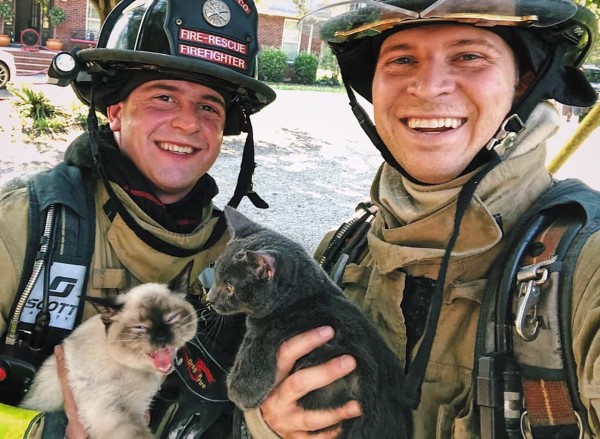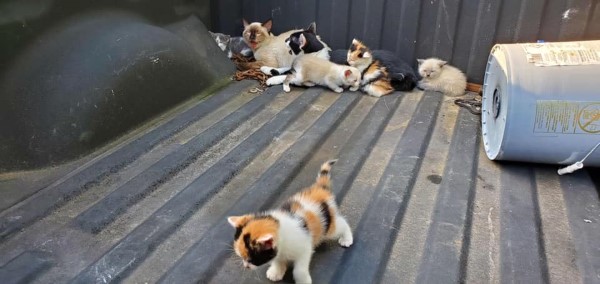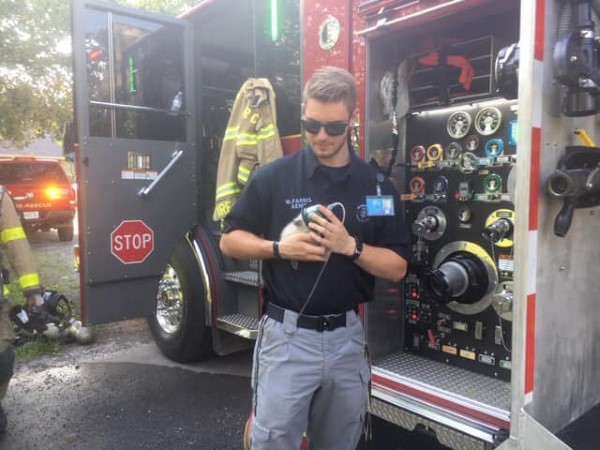
Firefighters Jonah Fettig and Jason Baird
On the afternoon of May 17, members of Rutherford County Fire & Rescue, Lascassas Volunteer Fire Department and Almaville Volunteer Fire Rescue Department responded to a structure fire on Bennett Street in Murfreesboro.
The crews soon discovered that a dozen kittens were still inside the structure.
Capt. Larry Sloan directed crews to rescue “these rambunctious and frightened little precious fur babies.”
All kittens were safely removed, revived with oxygen as needed, and “loudly proclaiming their gratitude,” according to Capt. Sloan.
Following the incident, RCFR public information officer Lisa Sloan supplied some pet fire safety information to the Pulse, based upon American Fire Administration guidelines.

According to the AFA, house fires affect approximately 500,000 pets each year. Make sure you know how you can keep your pets safe from fire dangers.
Prevent Fires
The first step is to make sure your pet does not start a fire. Pets are drawn to flickering candles like moths to a flame. Besides the risk of being burned, your pet can start a house fire if they accidentally knock the candle over. Never leave lit candles unattended, especially if they are within reach of your pet.
Also be careful with halogen lamps and space heaters that can start a fire if knocked over by a wagging tail or a curious cat.
Finally, be mindful of dangling electrical cords that can strangle your pet or electrocute them if chewed upon. Chewed and damaged cords should be replaced immediately since they can be a fire hazard.
Be Prepared
1. Be sure you have plenty of smoke detectors and carbon monoxide detectors in your home.
2. Check your smoke and carbon dioxide detectors regularly and change their batteries at least twice a year.

Will Farris provides oxygen
3. Make sure all of your pets wear a collar with identification tags and have a microchip implanted. Taking these precautions can avoid the heartache of a lost pet during these times of chaos.
4. Create an evacuation plan for your family and pets. Make sure everyone in your family knows the escape routes.
5. Keep leashes, pet carriers and treats by an exit. You will need these to help evacuate your pets during a fire.
Unfortunately, no matter how hard we try, we can’t prevent or predict every emergency, but what we can do is to be prepared. Being prepared is the best way you can improve your chances for a safe outcome.













